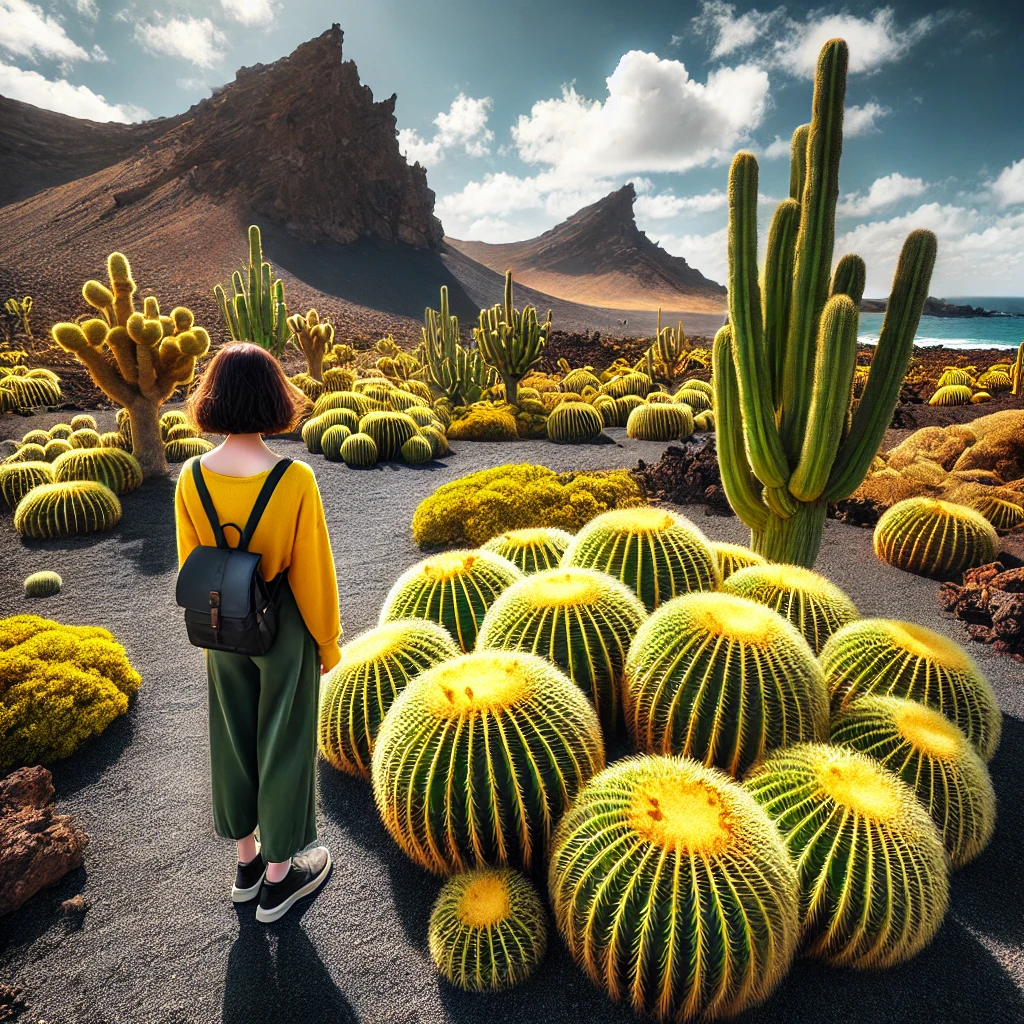ChatGPT:
The César Manrique Foundation (Fundación César Manrique) is a cultural institution located on the island of Lanzarote, Canary Islands, Spain. It is dedicated to preserving and celebrating the work and vision of the acclaimed artist and architect César Manrique, who played a vital role in shaping Lanzarote’s unique aesthetic and environmental identity.
Key Features of the César Manrique Foundation:
1. Location:
The foundation is housed in Manrique’s former home, known as Taro de Tahíche, near the town of Tahíche. The house is an architectural masterpiece, integrating traditional Lanzarotean design with innovative features inspired by the volcanic landscape.
2. Design and Architecture:
• The house is built atop a lava flow from a volcanic eruption in the 18th century.
• Its structure harmoniously blends modern architecture with natural volcanic elements, including a series of rooms carved into volcanic bubbles.
• The whitewashed walls, black volcanic stone, and bright green and blue accents are reflective of Manrique’s signature style.
3. Art Collection:
The foundation exhibits works by Manrique, including paintings, sculptures, and architectural projects. It also displays pieces from his private collection, featuring works by contemporary artists such as Pablo Picasso and Joan Miró.
4. Environmental Vision:
The foundation promotes Manrique’s philosophy of sustainable development and environmental conservation, which influenced Lanzarote’s tourism and architectural policies. His efforts helped limit high-rise developments and maintain the island’s natural beauty.
5. Cultural and Educational Activities:
• The foundation organizes art exhibitions, cultural events, and educational programs to raise awareness about art and sustainability.
• It also serves as a research center for studying Manrique’s contributions to art and environmentalism.
6. Gardens and Outdoor Spaces:
The property includes beautifully landscaped gardens featuring native plants, water features, and volcanic rock sculptures, further emphasizing the harmony between art and nature.
The César Manrique Foundation is both a tribute to the artist’s legacy and an emblem of Lanzarote’s unique cultural and environmental ethos. It is a must-visit destination for art enthusiasts, architecture lovers, and anyone interested in the island’s history.
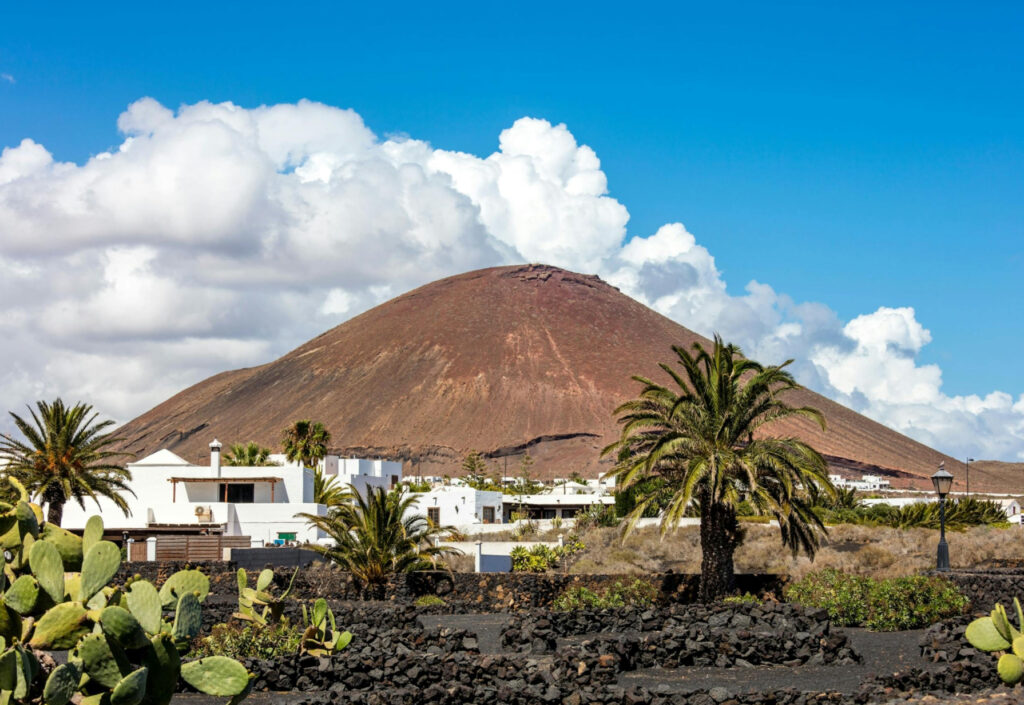
César Manrique’s vision and philosophy are rooted in the harmonious integration of art, architecture, and nature. As an artist, architect, and environmentalist, Manrique sought to create a unique aesthetic that celebrated Lanzarote’s natural beauty while advocating for sustainable development and respect for the environment. His ideas have left a lasting legacy, not only in Lanzarote but also as a global example of eco-conscious creativity.
Key Aspects of Manrique’s Vision and Philosophy:
1. Integration of Art and Nature
• Manrique believed that human creations should enhance, not detract from, the natural landscape.
• His designs, such as the César Manrique Foundation and Jameos del Agua, seamlessly blend natural elements like volcanic rock with artistic and architectural features.
• He often said, “For me, art is not just something to admire, it’s something to live in.”
2. Respect for the Environment
• Manrique was deeply committed to preserving Lanzarote’s unique volcanic terrain and natural ecosystems.
• He was instrumental in preventing the overdevelopment of the island, advocating for low-rise buildings that adhered to traditional architectural styles.
• His influence led to Lanzarote becoming a UNESCO Biosphere Reserve in 1993.
3. Sustainability in Tourism and Urban Planning
• Manrique envisioned Lanzarote as a model of sustainable tourism, emphasizing quality over quantity.
• He pushed for the use of natural materials, traditional techniques, and environmentally friendly practices in construction and tourism development.
• His work set a precedent for balancing economic growth with environmental stewardship.
4. Connection to Cultural Heritage
• Manrique celebrated the Canary Islands’ cultural identity, incorporating traditional motifs and local craftsmanship into his work.
• He sought to modernize these elements without losing their authenticity, creating a timeless aesthetic.
5. Aesthetic Simplicity
• His signature style was characterized by clean lines, open spaces, and a minimalist approach that highlighted the natural landscape.
• The use of whitewashed walls, volcanic rock, and bold colors (green, blue, red) echoed the colors of Lanzarote’s sea, sky, and earth.
6. Art as a Way of Life
• Manrique saw art not as something confined to galleries but as a way of living and interacting with the world.
• His home, Taro de Tahíche (now the César Manrique Foundation), exemplifies this ethos, transforming volcanic bubbles into functional, artistic spaces.
7. Legacy of Environmental Advocacy
• Manrique used his influence to raise awareness about environmental issues long before sustainability became a global movement.
• His work inspires a deep appreciation for the natural world and serves as a reminder of the importance of preserving it for future generations.
Quote Reflecting His Philosophy:
“I believe we are witnessing the last chance we have to save the planet from a future of unchecked devastation. My duty as an artist is to stand up for the values of nature against a system of endless consumerism.”
Manrique’s vision was not just about creating beautiful spaces—it was about fostering a deep connection between people, art, and the environment, making him a pioneer of eco-conscious design and living.
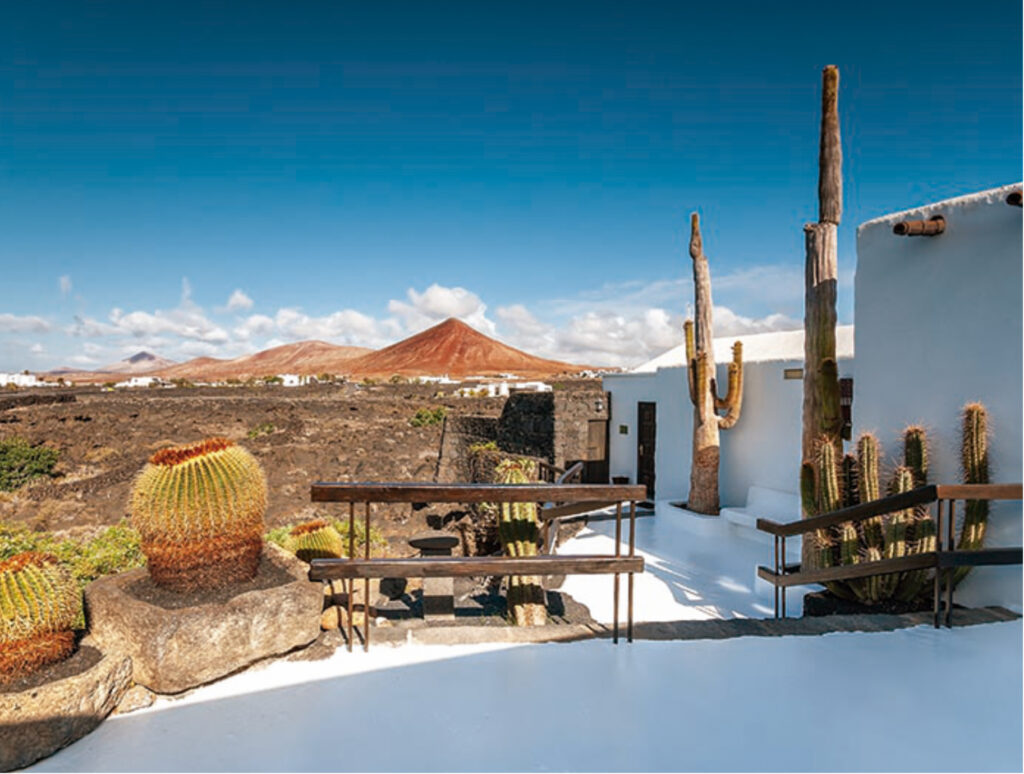
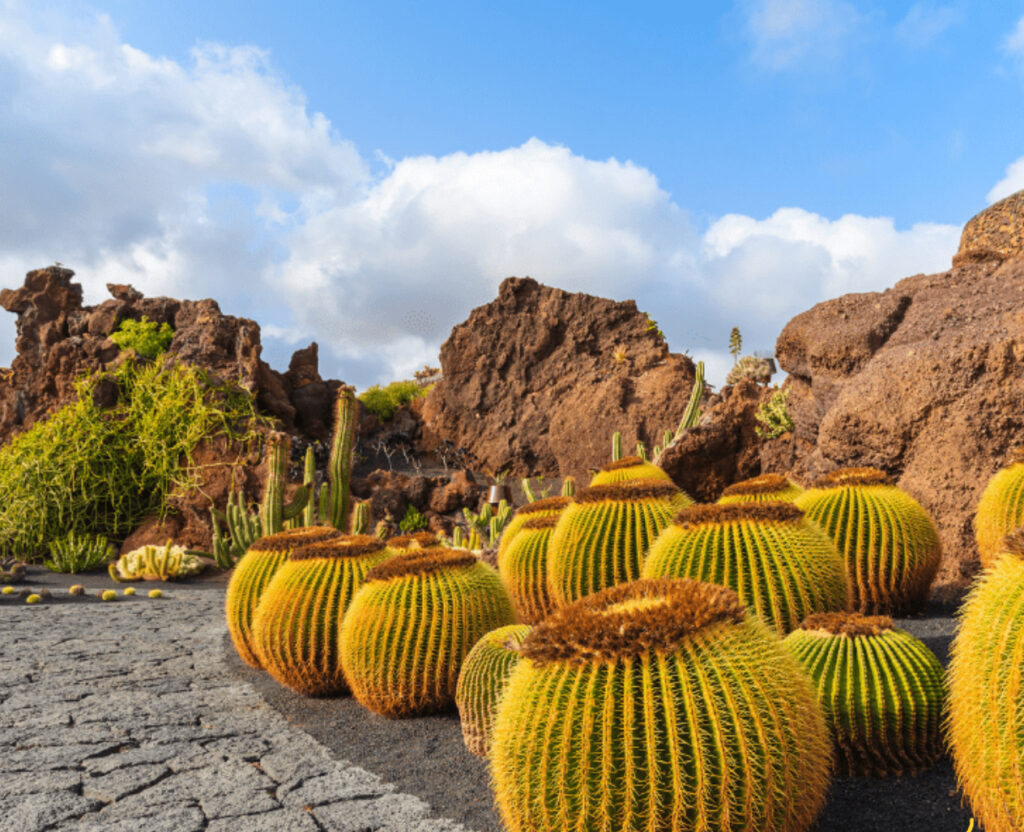
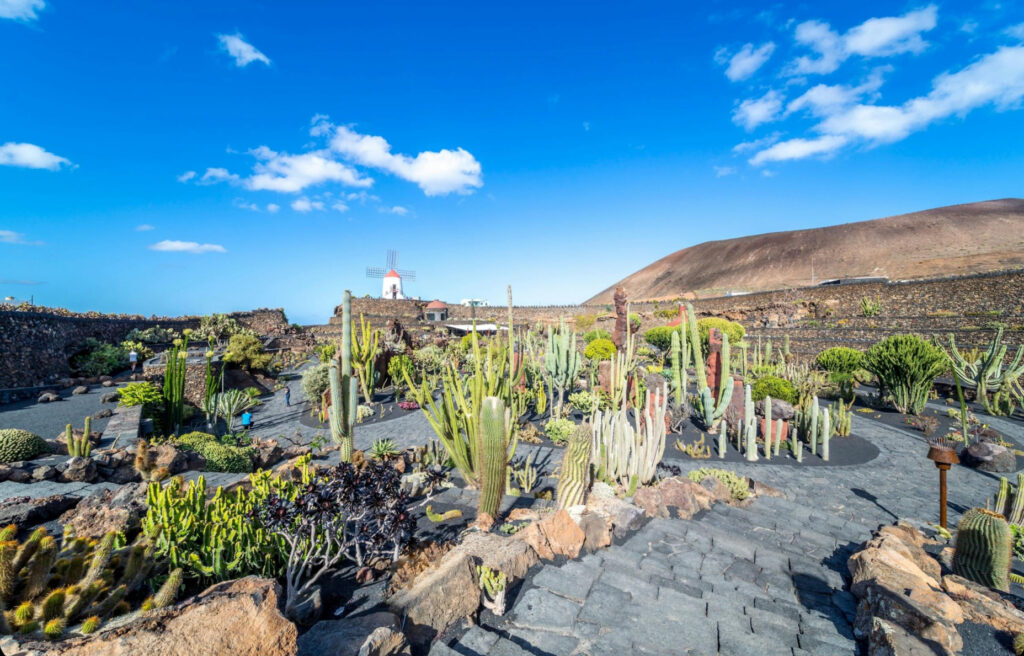
The César Manrique Foundation, housed in the artist’s former residence Taro de Tahíche, is a remarkable example of architectural ingenuity that blends modern design with the natural volcanic landscape of Lanzarote. It showcases César Manrique’s vision of harmonious coexistence between human creativity and nature.
Key Features of the Unique Architecture:
1. Volcanic Integration
• The foundation is built directly on top of a lava flow from Lanzarote’s 1730–1736 volcanic eruptions.
• The house incorporates five natural volcanic bubbles, which were hollowed out by nature during the lava flow, creating unique subterranean living spaces.
• These lava bubbles have been transformed into rooms and leisure areas, including a sitting room, a bar, and a small pool, demonstrating Manrique’s ability to turn natural formations into functional spaces.
2. Above-Ground Minimalism
• The house’s above-ground structure contrasts with the subterranean lava spaces, featuring a minimalist, modernist design.
• The exterior is painted white, a hallmark of Lanzarote’s traditional architecture, which reflects the island’s bright sunlight.
• Large windows frame views of the surrounding volcanic landscape, creating a seamless visual connection between the interior and the outdoors.
3. Blending Traditional and Modern Styles
• Manrique combined elements of traditional Canary Islands architecture—such as flat roofs, whitewashed walls, and green-painted wood—with his modernist sensibilities.
• The result is a design that feels both rooted in local culture and forward-thinking.
4. Open Spaces and Natural Light
• The house is designed with an emphasis on open spaces and natural light, creating a sense of harmony and fluidity.
• Skylights and glass walls allow sunlight to flood the interior spaces, enhancing the natural textures of volcanic rock and highlighting the vibrant colors of the furnishings.
5. Bold Use of Color
• Manrique’s signature palette of green, blue, red, and white dominates the interiors. These colors were chosen to reflect the natural elements of Lanzarote: green for vegetation, blue for the ocean, red for volcanic fire, and white for traditional architecture.
6. Organic Gardens and Landscaping
• The outdoor areas feature landscaped gardens that incorporate local plants and volcanic rock, seamlessly extending the aesthetic of the house into its surroundings.
• A pool surrounded by lava rock and palms exemplifies Manrique’s ability to create luxurious yet natural environments.
7. Functional Art Spaces
• In addition to living quarters, the house was designed as a working space for Manrique.
• Large studios and exhibition areas showcase his paintings, sculptures, and architectural designs, emphasizing the idea that art and life are inseparable.
8. Symbolism and Harmony
• The house serves as a metaphor for Manrique’s philosophy: human creations should work with, not against, nature.
• The juxtaposition of volcanic roughness and modern smoothness reflects a dialogue between the raw power of nature and the refined creativity of humanity.
The César Manrique Foundation is a living testament to the artist’s innovative architectural vision, demonstrating how design can celebrate and preserve the natural world while meeting human needs. It remains a source of inspiration for sustainable architecture and ecological harmony.
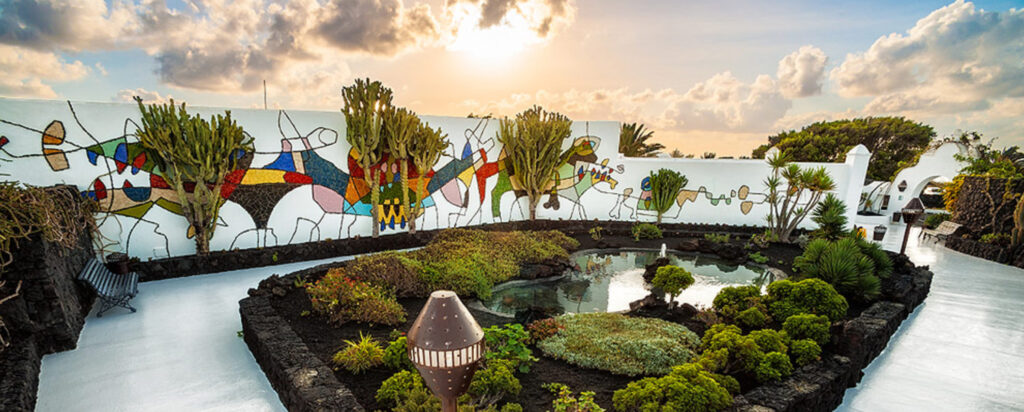
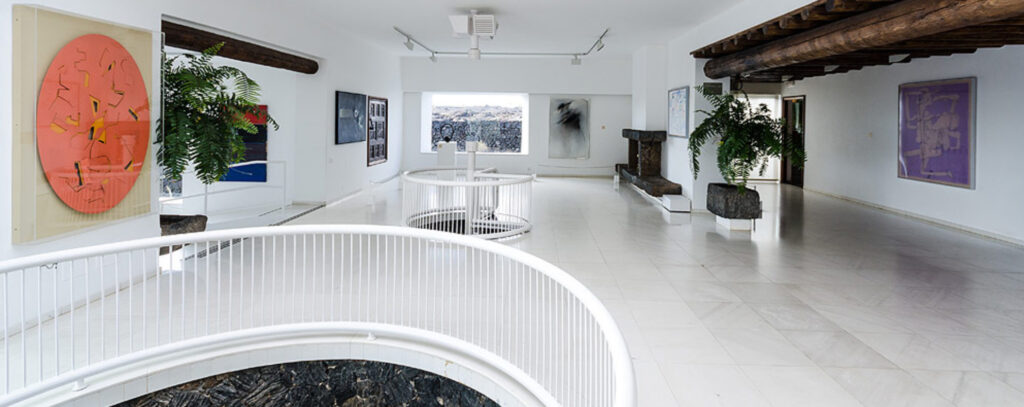
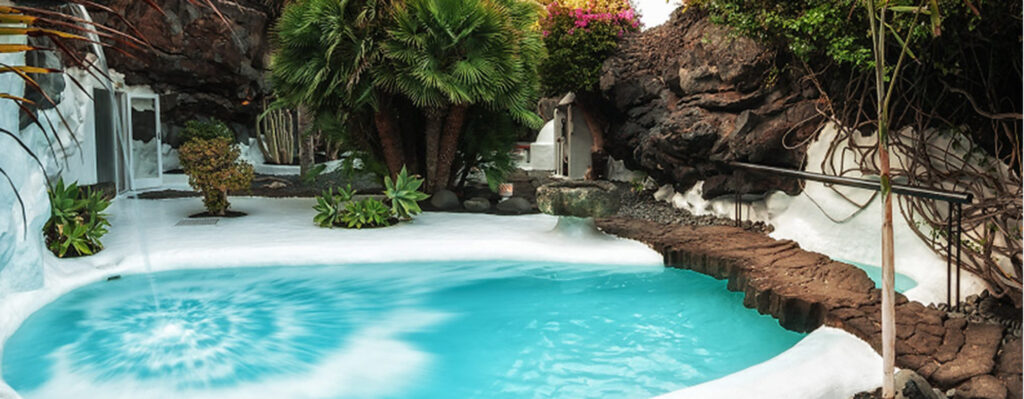
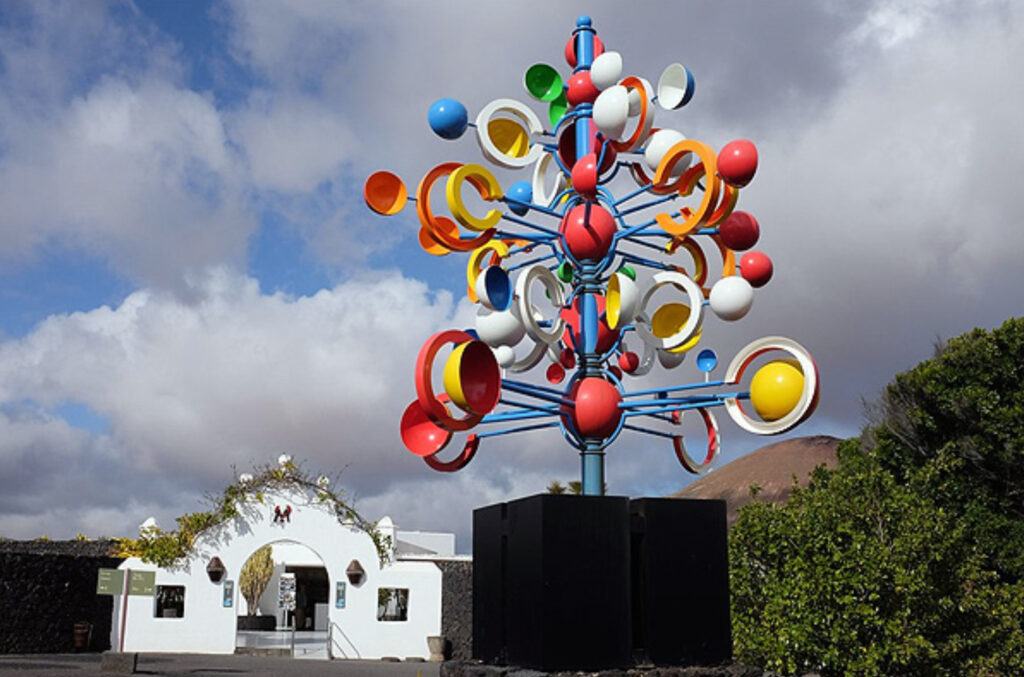
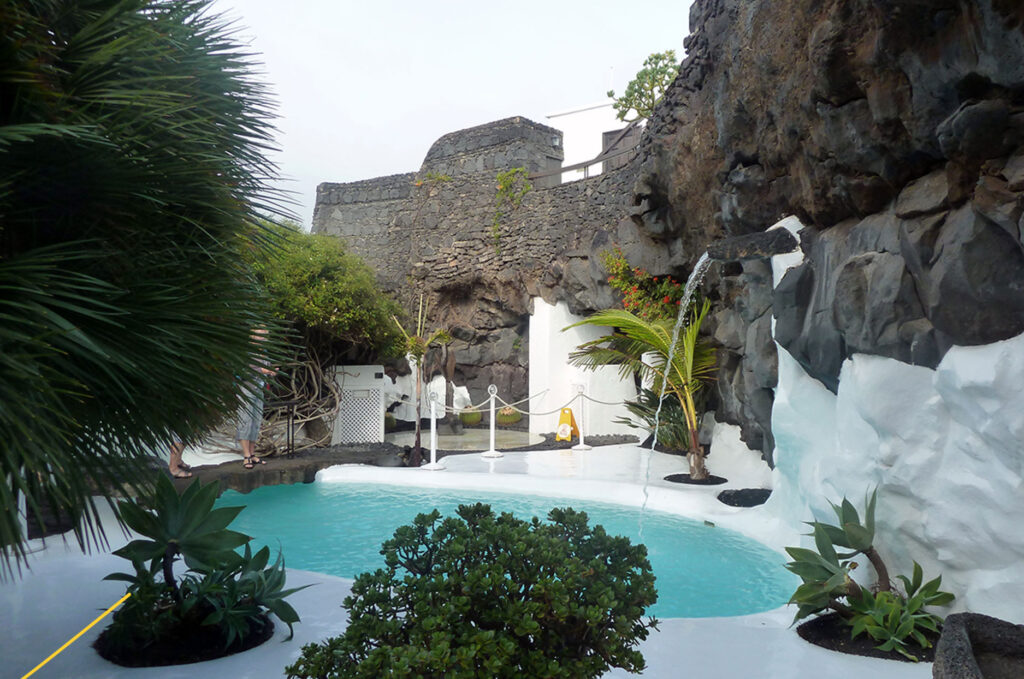
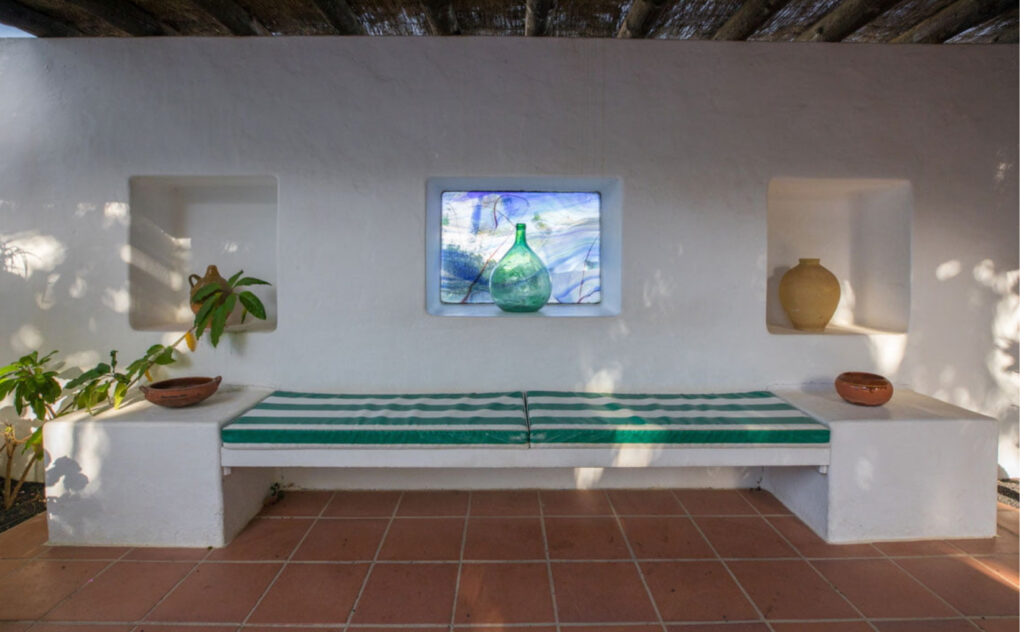
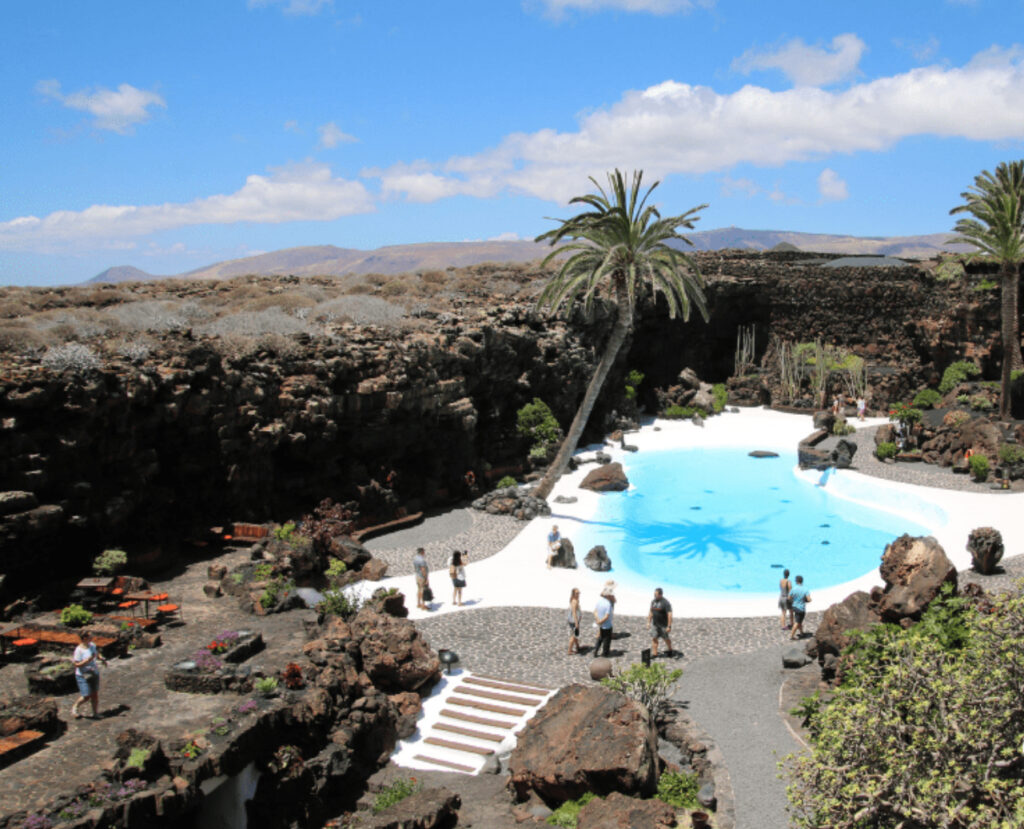
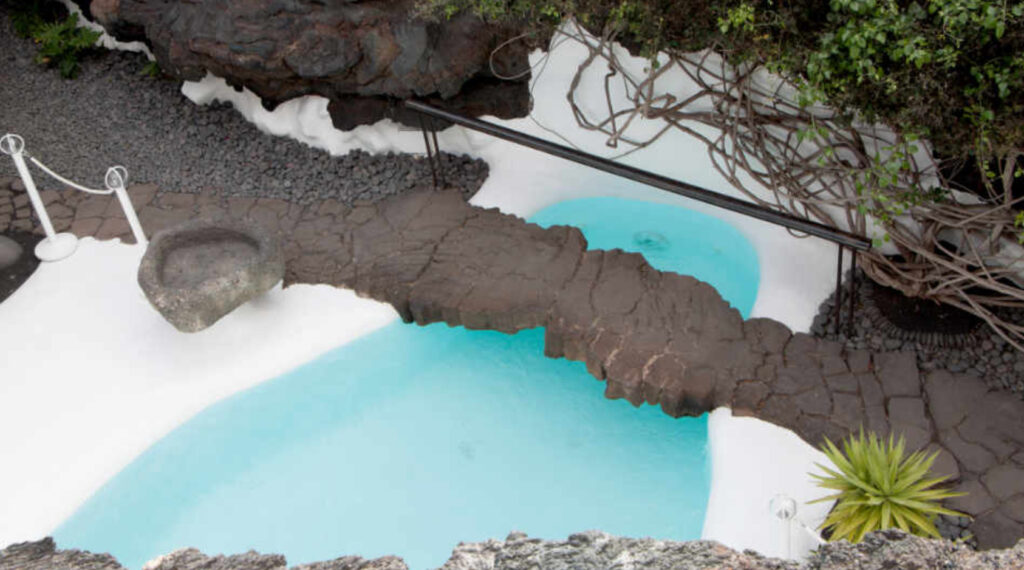
Visiting the César Manrique Foundation is an immersive experience that blends art, architecture, and nature in a truly unique setting. Guests are welcomed into Manrique’s former home, built on a lava flow, where the architecture seamlessly integrates natural volcanic elements with modern design. The journey begins above ground, where whitewashed walls and large windows frame stunning views of Lanzarote’s stark volcanic landscape.
Descending into the house, visitors explore underground rooms formed from natural volcanic bubbles. These spaces, transformed into lounges, a bar, and even a pool area, showcase Manrique’s talent for blending functionality with artistic vision. The use of natural light, bold colors, and organic forms creates an atmosphere of harmony and creativity.
The foundation also features galleries displaying Manrique’s paintings, sculptures, and designs, alongside works by renowned artists like Picasso and Miró. Outdoor gardens, landscaped with volcanic rock and native plants, enhance the connection between art and nature.
Throughout the visit, guests gain insight into Manrique’s philosophy of sustainability and his efforts to preserve Lanzarote’s unique environment. The foundation is not only a celebration of his legacy but also an inspiring reminder of the potential for harmony between human creativity and the natural world.
